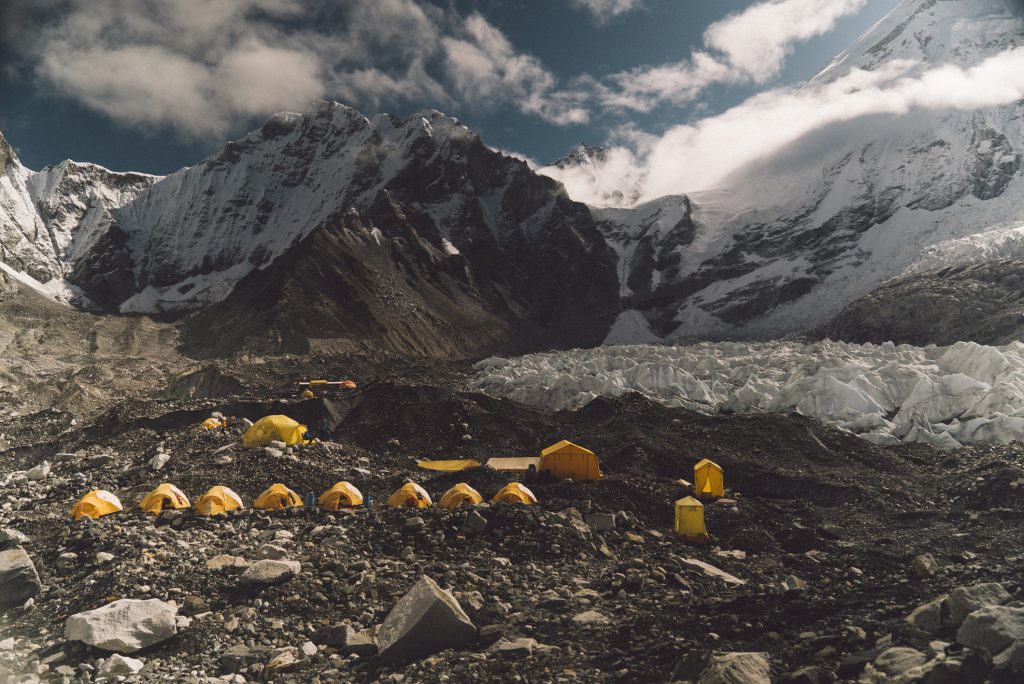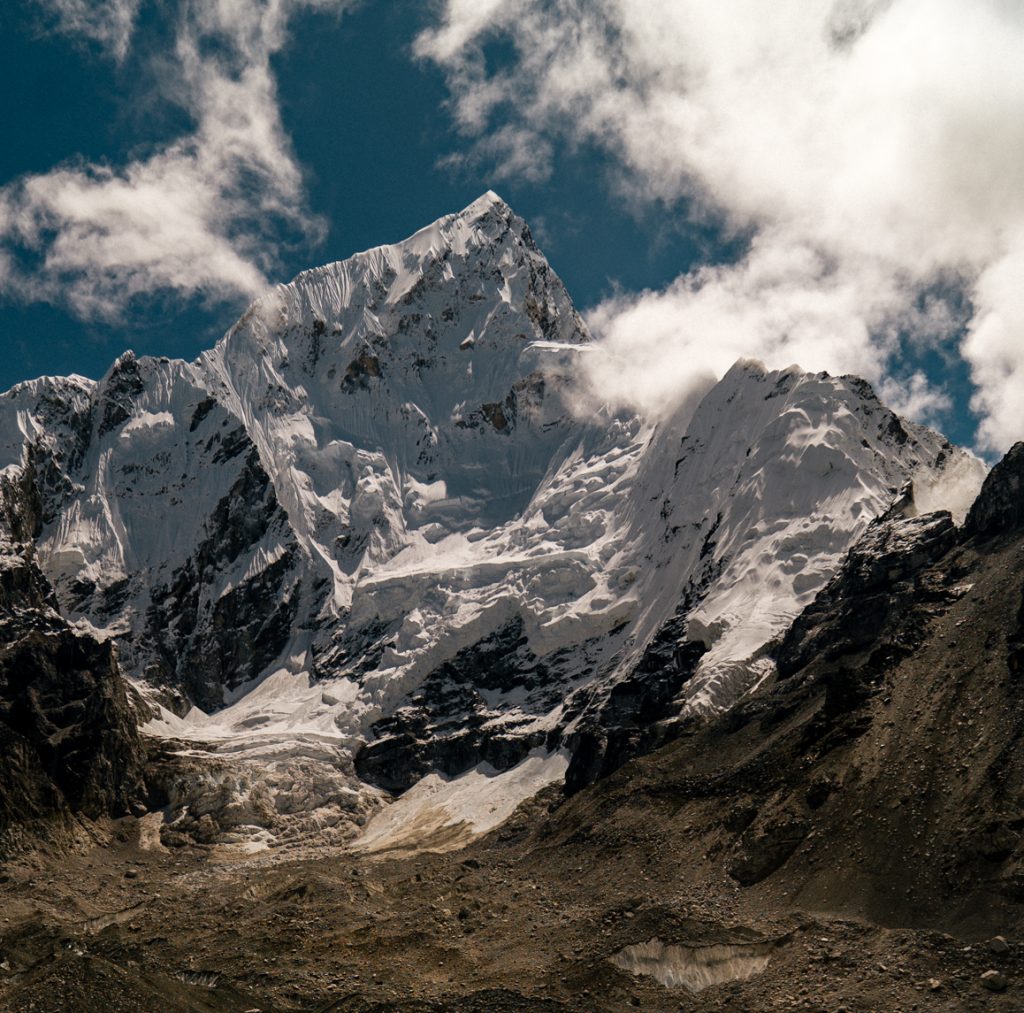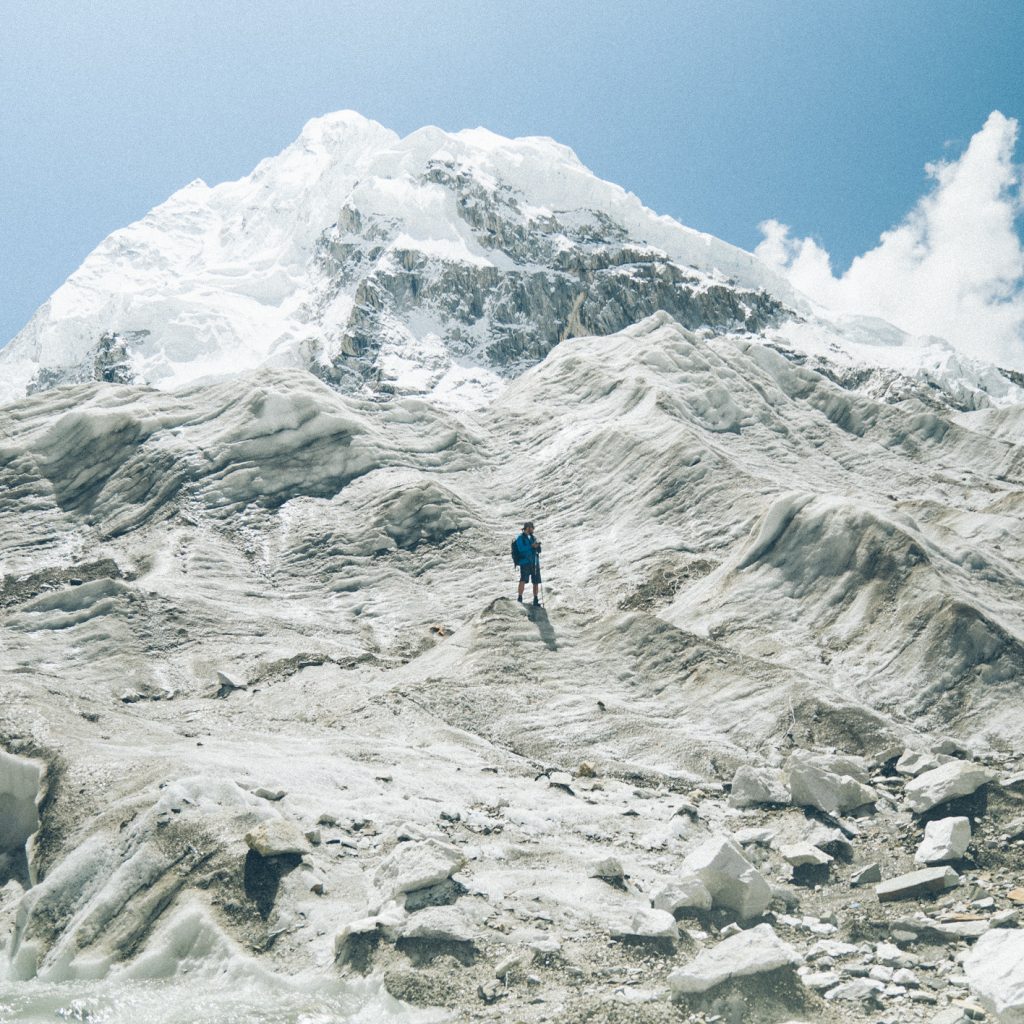
TREKKING TO EVEREST BASE CAMP - HOW TO ORGANIZE SUCH AN EXPEDITION?
Want to see the highest peak in the world but not sure if your climbing skills (and wallet!) will meet this challenging task? You don't have to conquer the eight-thousander – instead, you can stand at its base, at Everest Base Camp. Read on to learn about trekking to the base of Mount Everest, how to organize such a trip, and how much it will cost.
WHAT WILL YOU LEARN FROM THIS POST?
- Does trekking to Everest Base Camp require specialized skills?
- How much does trekking to Everest Base Camp cost?
- What jacket is suitable for the Himalayas?
- Do you need an expedition sleeping bag during the trek to Everest Base Camp?
IN BRIEF
On the trail to Everest Base Camp, located at an altitude of nearly 5 and a half thousand meters above sea level, specialized equipment and climbing skills are not required, contrary to appearances. Anyone with reasonable fitness can participate in trekking. You can organize the expedition independently or use the services of agencies organizing high-altitude expeditions. In any case, you must be prepared for expenses: in addition to buying a decent down sleeping bag and jacket, you will need to pay for insurance, flights, visas, entry to Sagarmatha National Park, as well as food and accommodation along the way. However, unforgettable views and experiences await you!
DREAMS ARE MEANT TO BE REALIZED!
Climbing to the summit of Mount Everest is a significant physical and organizational challenge. It requires solid and extensive preparation, and not everyone has to do it, even if they love mountains. But does not planning to reach the roof of the world mean you have nothing to look for in Nepal?
The Himalayas are not just about climbing eight-thousanders. There are intermediate options specifically designed for trekking enthusiasts – trails in Sagarmatha National Park that do not require specialized equipment or mountaineering skills. Right there, a scenic route leads to Everest Base Camp at an altitude of 5300 meters. The only things you need are comfortable hiking boots, good fitness, and... about three weeks of vacation. Almost like a Polish Tatra Mountains, right? Well, the Everest expedition is a bit more demanding. Let us explain!

TRAVEL TO NEPAL - WHEN AND HOW?
To plan your trip well, you need to know that the trekking season in Nepal is divided into two parts. The first part lasts from March to May, and the second part from October to December. The conditions between these seasons are challenging - in winter, you have to deal with a lot of snow, very low temperatures, and limited access to tourist infrastructure. In the summer season, the monsoon arrives in the Himalayas, bringing heavy rains, mud, and lots of leeches.
When it comes to travel logistics, the easiest way to reach Nepal is by plane. Usually, the journey involves multiple stages, leading through European airlines to Delhi, then local airlines to Kathmandu, and finally a small plane to the village of Lukla, which is the standard starting point for the Everest Base Camp trek.
TREKKING TO EVEREST BASE CAMP
From Lukla, where you will vividly recall all the prayers you have ever learned while landing on the suspended runway among the rocks, the journey to Everest Base Camp takes about eight days. Along the way, there are two acclimatization stops for trekkers. It takes three days to descend back to Lukla. However, if you have more time, it's worth considering diversifying the trek, for example, by taking the loop via Cho La Pass.
WHAT TO EXPECT ON SITE?
If you choose to go to Everest in the spring, you will see the tented village that is famous from photographs. By the end of May, the base camp starts to pack up, and even if some tents still appear in the autumn, it is certainly not as bustling and colorful as before.
Remember that the base camp is, in a sense, the home of mountaineers, and it is not appropriate to enter without an invitation. Therefore, it is rare for tourists to spend the night there; instead, they usually leave their belongings in Gorak Shep, the last village on the trail, from where they climb to EBC "lightly."
Unfortunately, you cannot see the summit of Everest from the EBC itself. To see it, you need to hike to Kala Patthar, a viewpoint hill at an altitude of 5550 meters.

COSTS OF CLIMBING TO THE BASE CAMP OF MOUNT EVEREST
It is worth mentioning the expenses associated with such an expedition.
First and foremost, you should definitely purchase mountaineering trekking insurance before departure. It's better to pay an additional 200-300 Polish zlotys than several thousand for potential use of rescue services and helicopter rides. Of course, we don't wish such a necessity upon anyone, but as they say, it's better to be safe than sorry.
Entry to Nepal requires obtaining a visa. This can be done electronically in advance or at the airport in Kathmandu, where specially placed machines are waiting for tourists for this purpose. It's best to get a monthly visa for $50.
There are also fees associated with entering the Sagarmatha National Park area on the second day of trekking. For foreign tourists, it amounts to 3,000 Nepalese rupees, which is currently equivalent to about $25. You must also not forget about the trekking permit worth 2,000 rupees per person. Such a permit, for an individual expedition, requires an application to the Ministry of Tourism of Nepal, unless you are traveling with an organized group, in which case your agency will take care of it. Of course, the agency does not work for free, but it will handle all the formalities for you.
You can also hire a porter along the route. It is not mandatory, of course, but in a sense, it supports what we would call a small local business in Europe. An additional advantage for the tourist is that instead of carrying a heavy backpack that hinders acclimatization, they can jump from stone to stone like a young goat, taking souvenir photos. But it's up to each individual.
EQUIPMENT ON THE WAY TO EBC
SLEEPING BAG FOR TREKKING TO EVEREST BASE CAMP
Only a few people decide to sleep in a tent on the Everest trail. Typically, trekkers stay in lodges and guesthouses. You can't expect luxury, but having a roof over your head, a bed, and a (shared) bathroom is quite a lot. You just need to consider that nights in the Himalayas are really cold, and no one has thought of heating. Therefore, an appropriate sleeping bag is essential in your equipment. Models like the Radical 4Z or 8Z with a 900 cuin loft are equipped with all the necessary improvements for harsh high-altitude conditions, so even if the temperature drops to -10 degrees Celsius, you will sleep comfortably. The Core 950 will also be suitable, a sleeping bag designed for winter expeditions. It has a lower loft and slightly more weight, but it's ideal for those who get cold easily (extreme temperature -39).
Down products are not only warm but also lightweight, and you should know that you won't be allowed to carry more than 15-20 kg on the plane to Lukla. Besides, you wouldn't want to carry more at five thousand meters above sea level. So the dilemma of "down sleeping bag or synthetic" should not even cross your mind if you're seriously planning a Himalayan expedition.

JACKET FOR TREKKING TO EVEREST BASE CAMP
The same goes for the jacket. Is it worth taking a down jacket with you? Absolutely! At a certain altitude, even in the height of spring, it's simply cold. As you might expect, there will be snow in the Himalayas regardless of the season. Therefore, you need to ensure proper thermal insulation, keeping in mind that you'll be engaging in intense physical activity. And that it won't be cold throughout the entire route.
That's why a lightweight and highly compressible down jacket, such as the Heritage inspired by the Golden Era of Polish Himalayan mountaineering Heritage, should have a prominent place in your backpack. You can also opt for a lighter model designed to serve as both an outer layer and a mid-layer worn under a hardshell when it's windy or raining, such as Eskimo or Phantom. It's important that your down jacket has an adjustable hood, a high collar, and, of course, a reliable dose of Polish White Goose Down.
CLOTHING SET
It's good to have a set of clothes for different weather conditions. In the first days of the trek, it might be hot enough to only need shorts and a T-shirt, but as you go higher, the chances are greater that you'll need proper trekking pants and a jacket. Also, take a hat and gloves with you.
FORGOTTEN ESSENTIALS
Perhaps you haven't thought about it, but essential items in your equipment are... high SPF sunscreen and sunglasses. In the Himalayas, you are really closer to the sky. 50 SPF is the necessary minimum to protect your delicate European face, especially since the sun not only shines from above but also reflects off the snow!
Also, take what you would bring for a multi-day trekking trip in the Polish mountains: trekking poles, a headlamp, a power bank.
WHAT ABOUT FOOD?
On the way to the Everest Base Camp, people usually dine in local restaurants and lodges or buy products for "self-assembly" in shops along the way. It's not like you enter the national park and don't see a living soul for the next few days, and you have to hunt for your meal and cook it over a fire. However, it's worth keeping in mind that the prices of soups, rice, momo dumplings, dal bhat, or other treats increase proportionally with the altitude. It's not a small cost because the food for these places has to be carried on the backs of porters or pack animals.
Although the perceptions of the wild Himalayas may - to put it mildly - deviate slightly from reality, and you encounter numerous tourists on the trail, it's still worth it. The view of the highest mountain in the world, immersing yourself in a different culture, and tasting a piece of high-altitude climbing will be remembered for a lifetime. Not everyone will find enough courage and enthusiasm to experience it! While preparing for the expedition, remember not only the appropriate equipment, which you can find at pajaksport.pl, but also decent fitness! For at least a few weeks before the trip, start going on regular mountain hiking or cycling trips. Or at least take the stairs up and down.
Photo source: pajaksport.pl